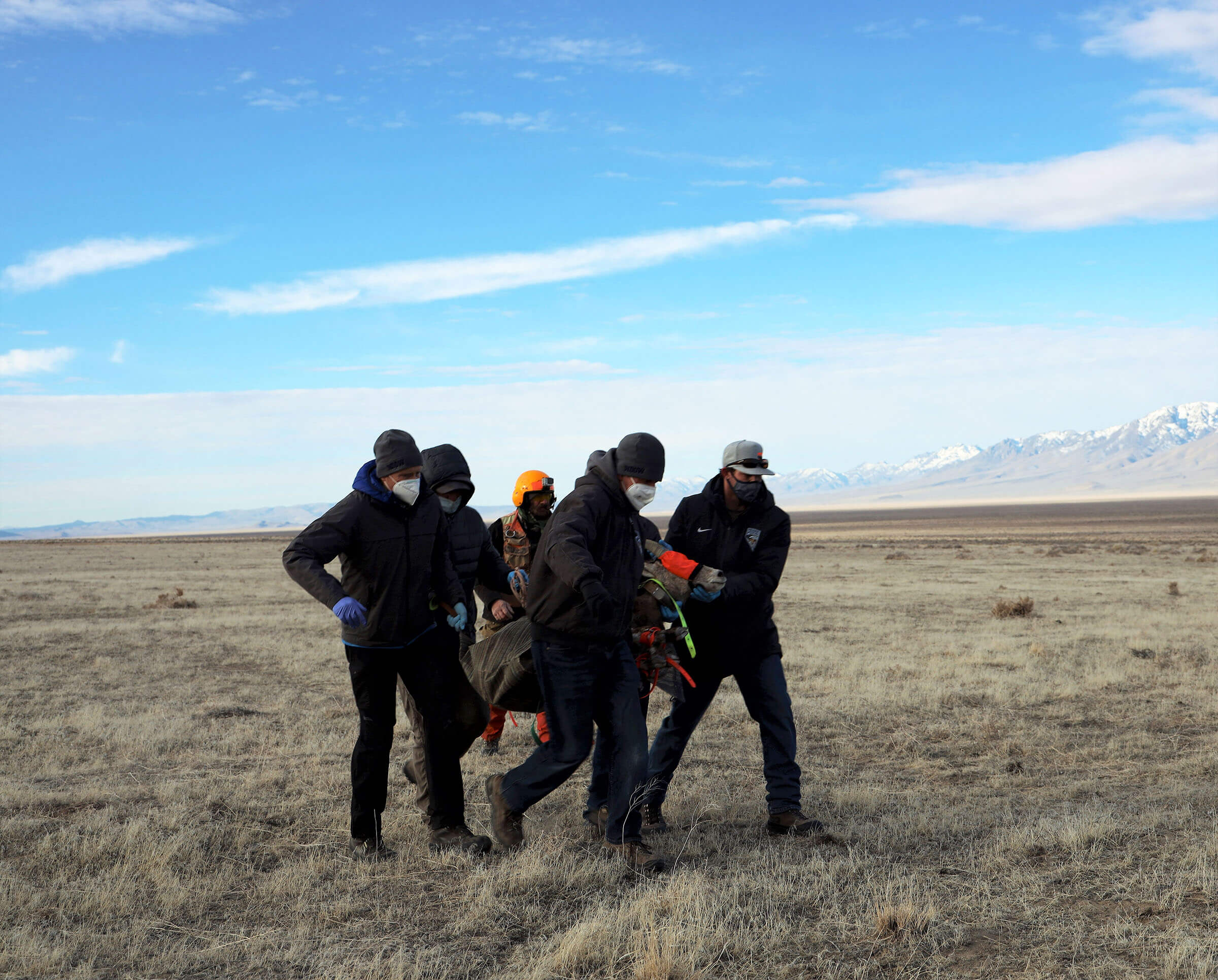There are several diseases on of concern for Bighorn Sheep that may significantly impact herd performance and survival
Bighorn Pneumonia
Introduction of the bacteria Mycoplasma ovipneumoniae to bighorn sheep from domestic sheep was one the main causes of the extirpation of a majority of bighorn sheep herds across the west. This pathogen initiates a cascade of events that can cause severe outbreaks of pneumonia with high rates of mortality in bighorn sheep herds. After an initial outbreak, some bighorn may chronically shed the bacteria and cause yearly outbreaks in lambs. Yearly lamb mortality can result in little to no recruitment and the population may eventually die out or at least fail to recover.
The Nevada Department of Wildlife has expended significant time and effort to study this disease and improve its management. This includes understanding how different strains vary across the landscape and how they interact with herds and environmental factors to cause disease. It also includes understanding how to improve herd performance post outbreak response and why some herds recover, and some do not. The disease represents the greatest barrier to improved herd performance in bighorn sheep and population recovery across Nevada.
In several herds NDOW has embarked on ambitious test and removal projects in cooperation with several non-profit organizations to remove chronic shedders from the population to eliminate the disease and recover the population. These efforts are ongoing but if they are successful, they have the potential to return struggling herds to highly successful ones.
In addition, NDOW continues to track the spread of the disease and respond to wandering bighorn and domestic sheep that have the potential to transmit the disease to new herds. Your help is appreciated in better understanding the disease. You can report observations of coughing, sick, or dead bighorn sheep as well as observations of domestic sheep in bighorn range to NDOW.
Sinus Tumor of Bighorn Sheep
Sinus tumors are a contagious tumor that grows in the sinuses of bighorn sheep. Tumors grow from the lining of the sinuses in the:
- Forehead
- Horns
- And above the teeth
- Tumors typically cannot be seen from the outside of the head.
- Tumors destroy bone, produces thickened sinus lining, gelatinous tissue, mucus and pus.
- They are found in all 3 subspecies of bighorn sheep and in herds from at least 6 states, including Nevada.
- There is no known risk to human health.
- The wildlife health program is currently conducting surveillance of hunter harvested animals to learn more about where sinus tumor occurs and the effect it has on sheep herds. You can participate by having your taxidermist send the rest of the skull to NDOW after the cap has been removed for mounting. They can even be paid for this per head.
For more information:
Taxidermists and meat processors can submit samples and earn rewards here:
Sinusitis
Sinusitis is inflammation of the sinuses. It is caused by bacterial infection secondary to damage caused by the migration of bot fly larvae (Oestrus ovis) through the sinus lining. They may have nasal discharge that ranges from clear to white with blood. When damage is severe it can lead to weakening of the bone which can cause breakage of horns.
Sheep may run from place to place and keep their head near the ground to avoid or stamp their feet or shake their head to try and prevent the bot fly from laying eggs in its nose. Sheep may also stand in a circle with their heads toward the center to avoid the fly.
Contagious ecthyma
Contagious ecthyma, also known as orf, is a viral disease of sheep and goats that results in crusting sores around the mouth. It is especially severe in lambs and the pain from the sores can prevent them from nursing normally, leading to poor nutrition and growth. In adults the disease manifests usually for a few weeks until they can mount an immune response and the sores resolve.
Orf is a zoonotic disease (animal to human transmission) that can cause painful sores at the point of contact, usually the hands. To avoid contracting the disease it is best to wear gloves when handling your harvest, especially if you notice sores around the mouth and nose.

